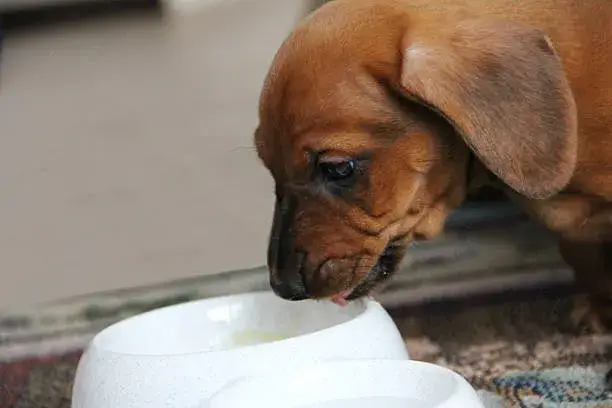If your puppy is sneezing and milk is coming out of its nose, this is likely due to a condition called reverse sneezing.
How do I know if my puppy has milk in his lungs?
- Coughing.
- Difficulty breathing.
- Crackling noises when taking a breath.
- Open mouth breathing.
- Wheezing.
How do you treat milk aspiration in puppies?
- Oxygen therapy to raise low blood oxygen levels.
- Medication to make breathing easier (‘bronchodilators’)
- Intravenous fluids to rehydrate your puppy.
- Anti-vomiting medication.
Can puppies choke milk?
Yes, they can!
Can a puppy survive aspiration?
Thankfully, the prognosis for aspiration pneumonia is good, with an average 77-81.6% survival rate1,2. However, this can be a significant complication of even elective surgery, and can add significant costs due to hospitalization and treatment.
Can a puppy survive aspiration pneumonia?
Aspiration pneumonia (AP) commonly affects dogs. Although most dogs recover, up to 25% succumb to AP, highlighting the need for early diagnosis and treatment.
How do you clear a newborn puppy’s nose?
Gently pull your puppy’s tongue forward to keep the airway clear. Shut your puppy’s mouth and place a hand under her chin and over her lips when the airway is clear. Cup your puppy’s nose with the other hand in a tube-like shape. Breathe out through your hands and into your puppy’s nose every five to six seconds.
What happens if a puppy aspirates?
Aspiration pneumonia is a lung infection that can develop if your pet inhales foreign material, such as food, liquid, or stomach contents. Foreign material that contacts the delicate tissue lining the lung’s airways causes inflammation, and the lungs become susceptible to infection.
How do you know if a puppy is aspirating?
- Coughing.
- Irregular breathing.
- Runny nose.
- Dehydration.
- Loss of appetite.
- Difficulty breathing.
How can I help my dog aspirated?
- Oxygen supplementation.
- Antibiotic therapy to treat suspected or confirmed infection.
- Anti-nausea medications to reduce (and hopefully prevent) vomiting.
- Medications to promote proper gastrointestinal motility.
- Intravenous fluid therapy to help maintain proper hydration.
How can I treat aspiration pneumonia in my puppy at home?
- Restricting their activity and making sure they get lots of rest.
- Offering them plenty of fresh water to help keep them from getting dehydrated.
- Sitting with your dog in the bathroom with a hot shower running for around fifteen minutes a few times a day.
What are the immediate signs of aspiration?
- Feeling that food is sticking in your throat or coming back into your mouth.
- Pain when swallowing.
- Trouble starting a swallow.
- Coughing or wheezing after eating.
- Coughing while drinking liquids or eating solids.
- Chest discomfort or heartburn.
Will aspiration fix itself?
Aspiration pneumonia is a complication of pulmonary aspiration, or the inhalation of food, liquid or vomit into the lungs. When the respiratory system is healthy and strong, pulmonary aspiration often clears up on its own.
What does aspiration sound like?
Noisy breathing or wheezing without an obvious cause. Wet-sounding voice due to phlegm (mucus) after eating.
How do you drain a dog’s lungs?
Puppies and small dogs can be held upside down to allow water to drain from the lungs. For larger dogs, lay them on their side and elevate the upper body so that the water can drain out of the nose and mouth. Check for a pulse.
How do you unblock a dog’s airway?
Carefully hold your dog on your lap and turn them onto their back, then using the palm of your hand apply pressure right beneath the rib cage and push firmly inwards and upwards 5 times in a thrusting motion. Roll your dog back onto their side and check their mouth for the food or object that was causing the issue.
How do you suction a newborn puppy?
Lower the puppy’s head to help drain fluid from his lungs, mouth and throat. Place a suction bulb inside the puppy’s mouth and nose to get rid of extra fluid. When the airway is clear, cover the puppy’s mouth and nose with your mouth, then breathe slightly two to three times.
How do I know if my dogs lungs are failing?
Signs. Respiratory problems can manifest in lots of different ways, including coughing, noisy breathing, a change in voice or reduced ability to exercise. More severe signs of breathing difficulties may include: Rapid breathing or continuous panting.

